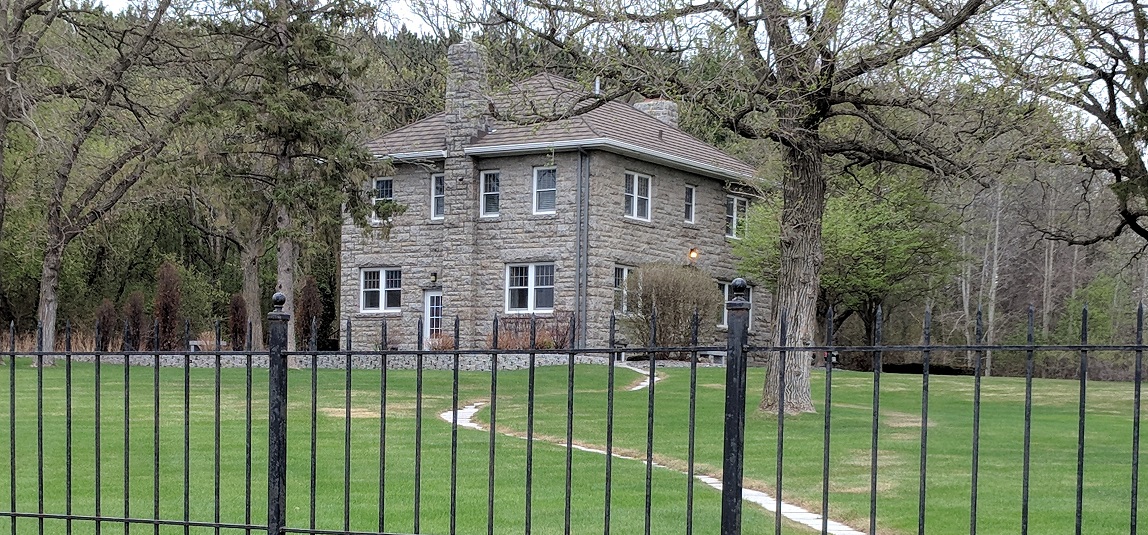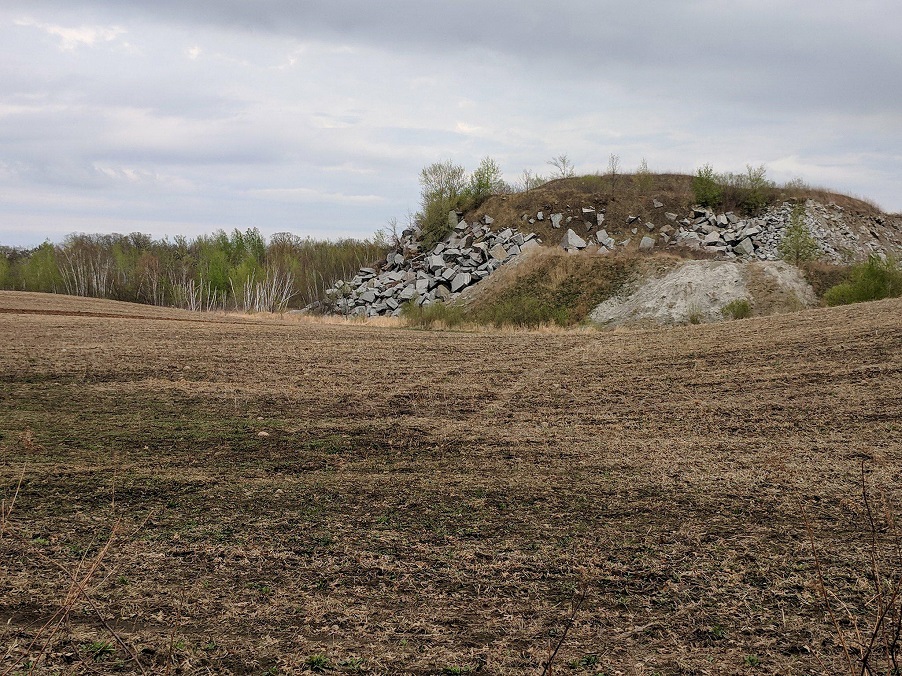Add “big rockpile” to the list of features occupying land that once was part of Minnesota golf, joining the likes of “elementary school,” “Target store parking lot” and “international airport runway.”
Rockville, Minn., is a city of 2,500 situated 10 miles southwest of St. Cloud on Minnesota Highway 23. It earned the Flintstonian name because of “granite rock formations on nearby streams,” Wikipedia notes, and the city of Rockville website chimes in with “granite is the heart of our city.”
John Clark was a prominent businessmen in Stearns County in the early 1900s. A Scottish immigrant who lived in St. Cloud, he and business partner J.B. McCormack opened a granite quarry at the southwestern edge of Rockville in 1907. That same year, he secured a contract to provide 250,000 pounds of stone for use in building the Cathedral of St. Paul.
Clark’s plot in Rockville consisted of 32 acres, according to a 1925 plat map, and on it he built a two-story house of pink granite from his quarry. Now known as the Clark and McCormack Quarry House, it is on the National Register of Historic Places.

Not that I am overly interested in Clark’s house, despite its distinguished appearance from the corner of Broadway and Pine. I visited Rockville in early May to try to quarry more information from a clip from the Minneapolis Tribune of May 16, 1926.
“Golf Club Organized By Rockville Players,” read the headline.
“Plans are being executed here to construct a six-hole golf course on the Clark estate south of town and organization of the Rockville Golf club is being completed,” the story opened. “The club started last season with three holes. Extreme improvements of the course will be made this season, as the interest in golf develops. The members signed up include Alex Milne, Bob Davidson, Robert Theis, Joseph Rausch, Dominick Rausch, Albert Hansen, Donald Clark, Gordon Clark, Herbert Schneider, Charles Johnson, Arthur Weisman, Alex Clark, Albert Rorthstein and Edward Taufen.”
John Clark, the granite magnate, had died the year before. It isn’t known whether he was a golfer, but as a Scottish immigrant, that certainly is a possibility, plus a possibility that he passed on an affinity for the game to his sons Donald, Gordon and Alex of the Rockville Golf Club. Other members of the golf club were associated with the granite industry, I was told at the Stearns County History Museum.
I never did find any more information, in Rockville, in other newspaper stories or at the museum, as to whether Rockville Golf Club ever expanded to six holes, much less nine or (highly unlikely) 18. An aerial photograph from 1938, the earliest available, shows no sign of a golf course on or near the Clark estate, though there is open land south of the house.
And there’s a big rockpile. Sorry, that’s all I’ve got on Rockville’s lost almost-golf course. Honestly, I don’t even know if the rockpile I saw from Rauch Road, in back of the Clark house, was part of the former golf grounds. When I add it all up, I really can’t count this as an actual lost golf course.

(Footnote: The three lost-course sites mentioned in the opening paragraph are in Mound, St. Paul and Bloomington.)
Next: Lost, west of the river.
Latest posts by Joe Bissen (see all)
- Another lost routing: Hilltop, Columbia Heights - June 19, 2024
- Two lost routes: First, Antlers Park - June 17, 2024
- Tree trouble and townball: Naeseth Country Club, Wanamingo - May 6, 2024